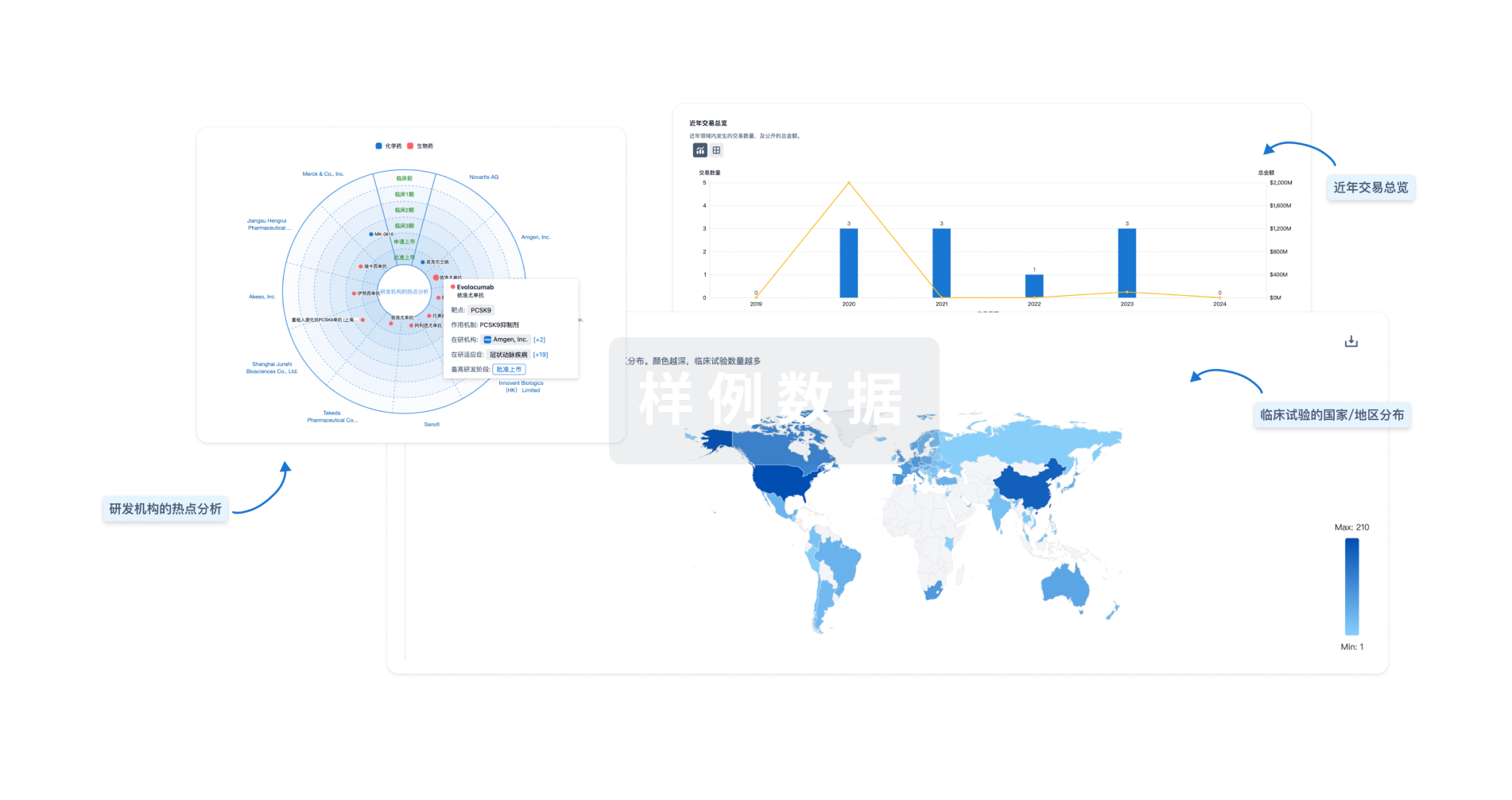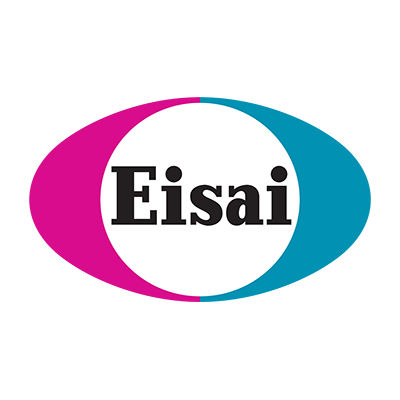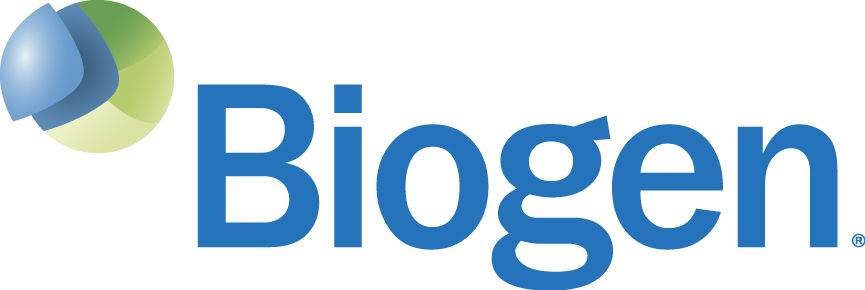预约演示
更新于:2025-05-07
APP
更新于:2025-05-07
基本信息
别名 Abeta、Abeta40、Abeta42 + [59] |
简介 Amyloid-beta peptides are lipophilic metal chelators with metal-reducing activity. Bind transient metals such as copper, zinc and iron. In vitro, can reduce Cu(2+) and Fe(3+) to Cu(+) and Fe(2+), respectively. Amyloid-beta protein 42 is a more effective reductant than amyloid-beta protein 40. Amyloid-beta peptides bind to lipoproteins and apolipoproteins E and J in the CSF and to HDL particles in plasma, inhibiting metal-catalyzed oxidation of lipoproteins. APP42-beta may activate mononuclear phagocytes in the brain and elicit inflammatory responses. Promotes both tau aggregation and TPK II-mediated phosphorylation. Interaction with overexpressed HADH2 leads to oxidative stress and neurotoxicity. Also binds GPC1 in lipid rafts.
The gamma-CTF peptides as well as the caspase-cleaved peptides, including C31, are potent enhancers of neuronal apoptosis.
Functions as a cell surface receptor and performs physiological functions on the surface of neurons relevant to neurite growth, neuronal adhesion and axonogenesis. Interaction between APP molecules on neighboring cells promotes synaptogenesis (PubMed:25122912). Involved in cell mobility and transcription regulation through protein-protein interactions. Can promote transcription activation through binding to APBB1-KAT5 and inhibits Notch signaling through interaction with Numb. Couples to apoptosis-inducing pathways such as those mediated by G(o) and JIP. Inhibits G(o) alpha ATPase activity (By similarity). Acts as a kinesin I membrane receptor, mediating the axonal transport of beta-secretase and presenilin 1 (By similarity). By acting as a kinesin I membrane receptor, plays a role in axonal anterograde transport of cargo towards synapses in axons (PubMed:17062754, PubMed:23011729). Involved in copper homeostasis/oxidative stress through copper ion reduction. In vitro, copper-metallated APP induces neuronal death directly or is potentiated through Cu(2+)-mediated low-density lipoprotein oxidation. Can regulate neurite outgrowth through binding to components of the extracellular matrix such as heparin and collagen I and IV. The splice isoforms that contain the BPTI domain possess protease inhibitor activity. Induces a AGER-dependent pathway that involves activation of p38 MAPK, resulting in internalization of amyloid-beta peptide and leading to mitochondrial dysfunction in cultured cortical neurons. Provides Cu(2+) ions for GPC1 which are required for release of nitric oxide (NO) and subsequent degradation of the heparan sulfate chains on GPC1.
Appicans elicit adhesion of neural cells to the extracellular matrix and may regulate neurite outgrowth in the brain. |
关联
308
项与 APP 相关的药物靶点 |
作用机制 焦谷氨酸 (3pE) 修饰型β-淀粉样蛋白抑制剂 |
在研机构 |
原研机构 |
在研适应症 |
非在研适应症- |
最高研发阶段批准上市 |
首次获批国家/地区 美国 |
首次获批日期2024-07-02 |
靶点 |
作用机制 APP抑制剂 |
在研机构 |
原研机构 |
在研适应症 |
非在研适应症- |
最高研发阶段批准上市 |
首次获批国家/地区 美国 |
首次获批日期2023-01-06 |
靶点 |
作用机制 APP抑制剂 |
在研机构 |
在研适应症 |
非在研适应症 |
最高研发阶段批准上市 |
首次获批国家/地区 美国 |
首次获批日期2021-06-07 |
781
项与 APP 相关的临床试验NCT06885567
A Multicenter, Randomized, Double-blind, Parallel Design, Placebo-controlled, Phase 2 Clinical Trial and Open-Label Extension Study to Evaluate the Safety and Efficacy for BEY2153 in Patients with Early Alzheimer's Disease
The purpose of this study is to investigate the safety and efficacy of BEY2153 in patients with early Alzheimer's Disease. Subjects who meet the inclusion and exclusion criteria will be randomized 1:1:1 to one of three treatment arms for 26 weeks administration. The extension study for additional 26 weeks will be conducted open-label with one treatment arm. Subjects will take BEY2153 orally once a day during the study.
开始日期2025-07-01 |
申办/合作机构 |
NCT06600880
Neuronavigation-guided Focused Ultrasound-induced Blood-brain Barrier Opening in Alzheimer's Disease Patients and Its Effects on Brain Amyloid and Tau
The primary purpose of this phase 1b study is to further assess the safety and reversibility of focused ultrasound induced blood-brain barrier opening (FUS-BBBO) in participants with Alzheimer´s Disease (AD) using a single-element transducer with neuronavigation guidance. Preliminary results from our phase 1a study demonstrate that our neuronavigation-guided FUS system was capable of safely and transiently open the BBB in participants with AD. The information collected in this new study may be used to design future clinical trials to ultimately provide a viable alternative for treatment of AD in a safe and noninvasive manner.
Our secondary objective includes the assessment of the therapeutic efficacy of FUS-BBBO in reducing amyloid beta and neurofibrillary tangles, the main hallmark pathologies of AD, using PET tracers. Based on our preclinical studies in AD transgenic mouse models, FUS-BBBO alone was able to reduce both the amyloid beta and tau protein load, resulting in improvements in behavioral tasks assessing memory. Therefore, in this new study, the effect of FUS-BBBO on the amyloid beta and tau protein load in patients with AD will be assessed through the use of PET tracers.
Our secondary objective includes the assessment of the therapeutic efficacy of FUS-BBBO in reducing amyloid beta and neurofibrillary tangles, the main hallmark pathologies of AD, using PET tracers. Based on our preclinical studies in AD transgenic mouse models, FUS-BBBO alone was able to reduce both the amyloid beta and tau protein load, resulting in improvements in behavioral tasks assessing memory. Therefore, in this new study, the effect of FUS-BBBO on the amyloid beta and tau protein load in patients with AD will be assessed through the use of PET tracers.
开始日期2025-06-30 |
申办/合作机构- |
NCT06911944
A Randomized, Double-Blind, Placebo-Controlled, Phase 4 Dose-Escalation Study Evaluating the Safety, Tolerability, and Efficacy of Donanemab in Adults With Down Syndrome
The goal of this clinical trial is to learn if donanemab can reduce levels of amyloid in the brain, and if donanemab is safe and well-tolerated in participants with Down syndrome.
The main questions it aims to answer are: Does donanemab reduce amyloid in the brain? Is donanemab safe and well-tolerated in people with Down syndrome? Researchers will compare donanemab to a placebo (a look-alike substance that contains no drug) to see if donanemab works to reduce levels of amyloid in the brain.
Participants in the study will be 35-50 years old and will be in the study for 12 months. Participants will then stay in the study for an additional 12 months in an long-term extension where all participants will receive donanemab. Participants who had a reduction in amyloid (measured by amyloid brain scan) by the end of the first 12 months will receive placebo for the long-term extension, while participants who did not have an amyloid reduction will receive study donanemab for the long-term extension. Everyone (participants and study staff) will remain blinded to treatment for the duration of the study.
Participants will:
* Have intravenous (IV) infusions of donanemab (or placebo) every 4 weeks
* Visit the clinic once every other month for checkups and tests. These tests will include brain scans (magnetic resonance imaging [MRI] and positron emission tomography [PET] ), blood draws and memory tests.
* Have a study partner who who can provide information about the participant and can join participant for some of the study visits.
The main questions it aims to answer are: Does donanemab reduce amyloid in the brain? Is donanemab safe and well-tolerated in people with Down syndrome? Researchers will compare donanemab to a placebo (a look-alike substance that contains no drug) to see if donanemab works to reduce levels of amyloid in the brain.
Participants in the study will be 35-50 years old and will be in the study for 12 months. Participants will then stay in the study for an additional 12 months in an long-term extension where all participants will receive donanemab. Participants who had a reduction in amyloid (measured by amyloid brain scan) by the end of the first 12 months will receive placebo for the long-term extension, while participants who did not have an amyloid reduction will receive study donanemab for the long-term extension. Everyone (participants and study staff) will remain blinded to treatment for the duration of the study.
Participants will:
* Have intravenous (IV) infusions of donanemab (or placebo) every 4 weeks
* Visit the clinic once every other month for checkups and tests. These tests will include brain scans (magnetic resonance imaging [MRI] and positron emission tomography [PET] ), blood draws and memory tests.
* Have a study partner who who can provide information about the participant and can join participant for some of the study visits.
开始日期2025-06-01 |
申办/合作机构 |
100 项与 APP 相关的临床结果
登录后查看更多信息
100 项与 APP 相关的转化医学
登录后查看更多信息
0 项与 APP 相关的专利(医药)
登录后查看更多信息
53,227
项与 APP 相关的文献(医药)2026-01-01·Neural Regeneration Research
Long noncoding RNA GAS5 acts as a competitive endogenous RNA to regulate GSK-3β and PTEN expression by sponging miR-23b-3p in Alzheimer’s disease
Article
作者: Liu, Jianghong ; Zhao, Kaiyue ; Zeng, Li ; Li, Zhuorong ; Cai, Zhongdi ; Liu, Rui ; Sun, Ting ; Liu, Mimin
2025-12-31·Virulence
Immunogenicity and vaccine efficacy of
Actinobacillus pleuropneumoniae
-derived extracellular vesicles as a novel vaccine candidate
Article
作者: Ryu, Young Bae ; Park, Gyeong-Seo ; Kim, Woo Sik ; Seo, Byoung-Joo ; Lee, Hyeon Jin ; Hyun Park, Su ; Kim, Chonghan ; Han, Jeong Moo ; Kim, Yun Hye
2025-12-31·Animal Cells and Systems
RA-PR058, a novel ramalin derivative, reduces BACE1 expression and phosphorylation of tau in Alzheimer’s disease mouse models
Article
作者: Palomera, Leon F ; Hong, Ju-Mi ; Kim, Tai Kyoung ; Han, Sukmin ; Cho, Yongeun ; Byun, Yujung ; Kim, Soyeong ; Park, Sunyoung ; Jee, Jun-Goo ; An, Hongchan ; Yim, Joung Han ; Lee, Yujeong ; Chae, Minshik ; Jeon, Yeji ; Kim, Sung Hyun ; Lee, Jeongmi ; Kim, Jun-Sik ; Park, Sang Yoon ; Lee, Yeongyeong ; Kim, Hyunwook ; Jo, Dong-Gyu ; Cho, Heewon ; Kang, Seongeun
1,969
项与 APP 相关的新闻(医药)2025-05-05
IRVINE, Calif., May 5, 2025 /PRNewswire/ -- Nuravax Inc., a biotechnology company pioneering immunotherapy for neurodegenerative disorders, has been awarded a $3 million grant from the National Institutes of Health (NIH) to support Duvax, the first dual-target Alzheimer's vaccine, in its entry into human clinical trials.
Nuravax, in partnership with the non-profit Institute for Molecular Medicine (IMM), secured the award on its very first NIH grant submission, earning top-tier scores. This rare distinction highlights the scientific strength and strategic importance of the Duvax vaccine.
The grant, awarded through NIH's highly competitive SBIR Fast-Track program, will fund a critical milestone in the clinical validation of Duvax. An initial portion of the $3 million grant has been allocated to initiate the Phase 1 clinical trial evaluating the safety and immunogenicity of Duvax as a secondary prevention therapy, with the remaining funds expected later in 2025.
"This SBIR grant is a powerful endorsement of our mission to clinically validate and advance Duvax as a first-in-class vaccine for Alzheimer's prevention," said Roman Kniazev, CEO of Nuravax. "While IMM laid the scientific foundation, our focus at Nuravax is on translating that innovation into real-world impact. This funding enables us to move Duvax into clinical trials in the U.S. and brings us one step closer to delivering it as preventive therapy for individuals at risk – before symptoms begin."
Duvax is a first-in-class vaccine that targets both amyloid-beta and tau proteins, the two hallmark drivers of Alzheimer's disease, positioning it at the forefront of Alzheimer's research. Unlike conventional treatments, Duvax is designed for use during the preclinical stage, when the disease is silently progressing but before cognitive symptoms appear.
"The Phase 1 trial, supported by this SBIR grant awarded to our development and commercialization partner, Nuravax, marks a critical step in translating years of foundational research at IMM into a potential clinical breakthrough," said Dr. Michael Agadjanyan, VP of IMM and Head of Immunology. "Based on strong preclinical data, we at IMM expect Duvax to elicit a robust immune response against both Aβ and tau pathologies, an approach that could fundamentally shift the paradigm of Alzheimer's treatment from symptomatic and disease-modifying treatment (DMT) to secondary preventive therapy for cognitively unimpaired people at risk of disease."
The vaccine's use is guided by highly precise and specific blood tests that detect early pathological changes, enabling timely intervention. By clearing toxic forms of amyloid-beta and tau before irreversible damage occurs, Duvax aims to shift the treatment paradigm from symptom management to secondary preventive therapy.
About Nuravax
Nuravax is a clinical-stage biotech company developing and advancing immunotherapeutic vaccines for neurodegenerative diseases, including Alzheimer's, Parkinson's, TBI, and CTE. Focused on early intervention, Nuravax aims to alter disease progression before irreversible damage occurs. The company leads the clinical development, regulatory strategy, and manufacturing of Duvax, a dual-target vaccine licensed from the Institute for Molecular Medicine (IMM), a nonprofit dedicated to neurodegenerative disease research.
About IMM
The Institute for Molecular Medicine (IMM) is a non-profit research organization dedicated to understanding, preventing, and curing chronic human diseases, with a focus on neurodegeneration. IMM is advancing MultiTEP — a universal vaccine platform technology that enables the development of diverse vaccine formats, including DNA, RNA, and recombinant protein-based designs.
Disclaimer: Research reported in this publication was supported by the National Institute On Aging of the NIH under Award Number R44AG091903. The content is solely the responsibility of the authors and does not necessarily represent the official views of the NIH.
SOURCE Nuravax Inc
WANT YOUR COMPANY'S NEWS FEATURED ON PRNEWSWIRE.COM?
440k+
Newsrooms &
Influencers
9k+
Digital Media
Outlets
270k+
Journalists
Opted In
GET STARTED
疫苗免疫疗法快速通道临床1期
2025-05-04
买科研服务(代计算、代测试、超算机时),送老李校长“科研理工男士情感课”第一性原理计算解决50年悬而未决难题:半导体中铜为何扩散更快?Ab initio及第一性原理入门参考书介绍《海贼王》告诉你,做科研为什么不能闭门造车……985博导亲测:用DeepSeek写国自然本子,3天完成30天工作量来自公众号:深圳湾实验室本文以传播知识为目的,如有侵权请后台联系我们,我们将在第一时间删除。如果把大脑比作一座精密运转的城市,阿尔茨海默病就像一场悄无声息的“垃圾危机”——β-淀粉样蛋白(Aβ)斑块如同街道上越积越多的垃圾袋,而tau蛋白缠结则是地下管道里逐渐凝固的胶状物。在这场危机中,原本负责清理的“城市环卫工”小胶质细胞和“应急维修队”星形胶质细胞,却可能因为过度“加班”而让局面雪上加霜。最近,深圳湾实验室的科学家们通过一场“血液侦探行动”,揭开了这场垃圾危机的关键线索。他们发现,血液中两种特殊的信号分子——sTREM2和GFAP,就像城市监控系统的警报灯,不仅能预警危机,甚至能影响垃圾堆积的速度。 问01“清洁工”的隐藏武器小胶质细胞是大脑的专职清洁工,它们手持“TREM2通行证”进入工作区域。当TREM2被剪切成可溶形式sTREM2进入脑脊液和血液时,科学家们曾以为这只是“清洁工打卡下班的痕迹”。但新研究发现,血液中sTREM2浓度越高,大脑皮层中tau缠结反而越少。这就像清洁工虽然离开现场,却留下了强力清洁剂,持续溶解地下的胶状物。02“失控维修队”的致命陷阱 与此同时,星形胶质细胞这支“维修队”一旦过度激活,血液中的GFAP浓度就会飙升。研究显示,GFAP越高,Aβ垃圾袋和tau胶状物堆积得越快。这好比维修队在抢修时疯狂倾倒水泥,本想封堵漏洞,却把整条街道变成了混凝土森林。更令人警惕的是,高浓度GFAP还会放大其他危险信号(如Aβ42/40和p-tau)对tau缠结的推波助澜。图1 血浆sTREM2和GFAP浓度与AD典型脑区Aβ PET和tau PET的相关性03血液中的“攻防暗战”研究团队对318名老年人的大脑进行“CT扫描式侦查”,发现了一个精妙的平衡机制:当sTREM2浓度升高时,它能削弱Aβ垃圾对tau胶状物的“传染效应”,就像给地下管道涂上防粘涂层;而GFAP浓度升高时,却会让Aβ垃圾的毒性“火力全开”,仿佛给混凝土搅拌车加装了涡轮引擎。更有趣的是,sTREM2还能悄悄“策反”GFAP——当sTREM2足够多时,GFAP对tau缠结的助纣为虐效果竟被大幅削弱。这种分子层面的“无间道”,为未来药物设计提供了绝妙思路:或许只需要在血液中投放sTREM2“特工”,就能同时压制GFAP“叛军”和tau“地下组织”。图2 血浆sTREM2和GFAP浓度对血浆Aβ、p-tau和tau PET相关性的影响图3 血浆sTREM2和GFAP浓度对Aβ病理和tau PET相关性的影响04“脑健康联防网络”破解老年脑危机这项研究的突破,源于郭腾飞课题组在粤港澳大湾区建立的“脑健康联防网络”。他们通过4000多次科普宣讲、3000多份问卷筛查,从1200多位老年人身上追踪到这场分子攻防战的蛛丝马迹。他们不仅仅是在实验室里观察细胞,并且正在整个社区中努力守护人类认知的边疆。如今,科学家们正试图将血液sTREM2打造成“认知疫苗”——它或许不能完全清除垃圾危机,但能让大脑城市的衰败速度大大延缓。而对于GFAP这个“双面间谍”,则需要更精准的调控策略:既不能让它彻底罢工(毕竟正常的维修不可或缺),又要防止它陷入疯狂状态。这项发表于Molecular Psychiatry的研究,不仅改写了阿尔茨海默病的“犯罪档案”,更启示我们:对抗神经退行性疾病的主战场,可能不在大脑深处,而在每个人血管中流淌的分子密语里。郭腾飞郭腾飞课题组(课题组网站:http://guotf-lab.szbl.ac.cn/ )主要针对“AD病理的临床演化规律及早期诊断”的关键科学问题,在国家自然科学基金(优秀青年基金、区域联合重点项目和面上项目)、广东省基础与应用基础研究基金(杰出青年基金)、深圳市优秀科技创新人才培养项目(优秀青年基金)和深圳湾实验室等多项基金支持下,在深圳牵头建立“大湾区老年脑健康计划”AD社区队列,截止2025年4月,已经完成30余次社区宣讲,4000人次AD早期防护科普,3000余人问卷调查及初筛,已入组超过1200人社区志愿者开展认知评估、血液/脑脊液采集、多模态颅脑MRI和PET显像扫描等实验内容,以社区老人和AD病人为研究对象,使用多模态神经影像(PET/CT和MRI)和生物标记物等技术致力于AD的临床演变规律及早期诊疗靶点研究,欢迎优秀的学生和博士后加入团队开展AD相关研究,同时期待开展与AD早期诊疗相关的合作课题(邮箱:tengfei.guo@szbl.ac.cn)。文章来源 | 郭腾飞课题组 Deepseek欢迎投稿、建议 | media@szbl.ac.cn
专利侵权
2025-05-04
·精准药物
药研视角JMC速览丨2025.5.01近日,中国药科大学徐晓莉、郭小可、尤启冬教授团队在国际权威药物化学期刊《Journal of Medicinal Chemistry》上发表了一篇题为“吡唑类化合物的结构优化作为Hsp90调节剂以增强抗肿瘤活性”的研究论文。该研究聚焦于热休克蛋白90(Hsp90)这一重要的癌症治疗靶点,通过系统的构效关系(SAR)优化,开发出了一种新型的吡唑类化合物DDO-6691(化合物39),其作为Hsp90的共价抑制剂,能够显著增强抗肿瘤活性,并展现出良好的药物代谢动力学(ADME)特性。一分钟速览研究背景热休克蛋白90(Hsp90)是一种在真核细胞中高度保守的分子伴侣,对细胞功能和蛋白质稳态起着关键作用。在正常细胞中,Hsp90参与基因表达、细胞增殖和细胞周期调控,但在肿瘤细胞中,其过表达会导致多种癌基因蛋白的失调,进而促进肿瘤的发展。因此,靶向Hsp90的分子伴侣系统已成为一种极具潜力的癌症治疗策略。近年来,研究发现Hsp90与细胞分裂周期蛋白37(Cdc37)之间的相互作用在肿瘤发生中起着重要作用,通过破坏这一相互作用,可以特异性地抑制癌基因激酶客户蛋白的成熟,从而为癌症治疗提供了一种新的途径。重点内容本研究的核心目标是通过系统的构效关系(SAR)优化,开发出具有更强抗肿瘤活性和更好药物代谢动力学(ADME)特性的Hsp90共价抑制剂。研究人员基于前期发现的吡唑类化合物DDO-6600,对其结构进行了深入优化。通过在吡唑环的3位引入不同的取代基,研究人员发现,当引入吡啶环时,化合物的活性显著提升。最终,通过将丙烯酰胺基团替换为乙烯砜基团,研究人员成功开发出了化合物DDO-6691(化合物39),其对HCT-116细胞的IC50值仅为1.08 ± 0.23 μM,且与Cdc37基因敲除的HCT-116细胞相比,野生型细胞对DDO-6691更为敏感,表明其活性与Cdc37密切相关。在体外实验中,DDO-6691能够显著促进依赖Cdc37的激酶客户蛋白(如AKT和CDK4)的降解,而不触发Hsp90和Hsp70的上调,避免了热休克反应的发生。此外,DDO-6691在细胞膜渗透性和肝脏微粒体稳定性方面表现出良好的特性,其在模拟胃肠道液中的稳定性也得到了验证。在体内实验中,DDO-6691能够显著抑制HCT-116异种移植瘤小鼠模型中的肿瘤生长,且未观察到明显的体重下降或其他毒性反应,显示出良好的安全性和耐受性。研究总结本研究通过系统的结构优化,成功开发出了一种新型的吡唑类化合物DDO-6691,其作为一种Hsp90的共价抑制剂,能够显著增强抗肿瘤活性,并展现出良好的药物代谢动力学特性。DDO-6691通过共价修饰Hsp90的Cys598位点,破坏Hsp90与Cdc37之间的相互作用,从而抑制依赖Cdc37的激酶客户蛋白的成熟与稳定,最终实现抗肿瘤效果。在体外和体内实验中,DDO-6691均表现出显著的抗肿瘤活性和良好的安全性,为靶向Hsp90-Cdc37相互作用的癌症治疗提供了新的策略和潜在的药物候选物。图片来源:ACS详细阅读01Background研究背景热休克蛋白90(Hsp90)是一种在真核细胞中高度保守的分子伴侣,对细胞功能和蛋白质稳态起着关键作用。在正常细胞中,Hsp90参与基因表达、细胞增殖和细胞周期调控,但其过表达会导致多种癌基因蛋白失调,从而促进肿瘤的发展。因此,靶向Hsp90的分子伴侣系统已成为一种极具潜力的癌症治疗策略。文献提到,TAS-116于2022年获批用于治疗胃肠道间质瘤,这进一步证明了Hsp90作为癌症治疗靶点的有效性。Hsp90通过与多种辅助分子伴侣的相互作用来发挥其功能。在Hsp90的分子伴侣循环中,客户蛋白首先由Hsp70/Hsp40携带并通过Hop蛋白与Hsp90结合。随后,在Cdc37和免疫亲和素等辅助分子伴侣的作用下,客户蛋白被高效地转移到Hsp90上,同时Hsp70/Hsp40从复合物中解离。Aha1通过增加Hsp90的ATP酶活性促进其N端结构域的闭合,而p23与Hsp90二聚体的结合则稳定了其构象,促进了客户蛋白的构象成熟,并诱导Aha1从复合物中解离。最后,Hsp90二聚体中的ATP水解释放客户蛋白和p23。值得注意的是,200多个激酶的折叠和成熟依赖于Hsp90-Cdc37的相互作用,包括Akt、CDK4/6、c-Raf和EGFR等,这些激酶在肿瘤细胞中起着关键作用。这些癌基因激酶的异常活性显著增强了细胞代谢,导致癌症特征如无限增殖、畸形、细胞侵袭和免疫逃逸的出现。因此,破坏Hsp90-Cdc37的相互作用以特异性抑制癌基因激酶客户蛋白的成熟,为癌症治疗提供了另一种途径。文献还回顾了之前的研究,包括本研究团队之前鉴定的肽基Hsp90-Cdc37抑制剂Pep-1及其衍生物Pep-5,以及通过虚拟筛选鉴定的VS-8及其衍生物VS-10。此外,研究团队还发现了DDO-5936,它能够结合到Hsp90的N端并导致Hsp90-Cdc37解离。基于这些研究,团队进一步开发了具有良好的稳定性和口服生物利用度的18h。其他研究团队也取得了进展,例如Bergan的研究团队开发了KBU2046,它通过干扰Hsp90-Cdc37相互作用来抑制肿瘤细胞的运动性,而不会引起细胞毒性。此外,DCZ3112作为一种小分子抑制剂,通过靶向Hsp90-Cdc37相互作用有效抑制了HER2阳性乳腺癌细胞的增殖。SOMCL-16-171被鉴定为Hsp90α中间域的非共价别构调节剂。Celastrol被证明能够结合到Hsp90的N端并干扰Hsp90-Cdc37的蛋白-蛋白相互作用,从而抑制肿瘤细胞的生长。此外,Zhang的研究团队证明Celastrol能够共价修饰Hsp90 C端的半胱氨酸残基,从而别构调节Hsp90-Cdc37的相互作用。类似地,Withaferin A和Sulforaphane通过共价修饰Hsp90 C端的半胱氨酸残基破坏了Hsp90-Cdc37的相互作用。然而,这些天然产物修饰的氨基酸残基仍然未知。2015年,Kongensin A被发现能够共价结合到Hsp90并破坏Hsp90-Cdc37的相互作用。令人惊讶的是,LC-MS/MS证实Kongensin A的共价修饰位点是Hsp90α M端结构域的Cys420。在本研究团队之前的研究中,通过计算算法框架结合生物学分析方法,鉴定出了DDO-6600,它能够共价修饰Hsp90上的半胱氨酸残基598(图1)。机制研究表明,DDO-6600通过共价靶向Hsp90上的Cys598,别构破坏Hsp90-Cdc37的相互作用,诱导依赖Cdc37的激酶客户蛋白的降解,并促进多种肿瘤细胞的凋亡。然而,DDO-6600对肿瘤细胞的活性和药物样特性仍然不足,需要进一步的结构优化。通过深入分析结合位点的结构特征,采用基于结构的药物优化方法,探索非共价结合部分和共价弹头的优化(图2)。这种结构优化导致了化合物39(DDO-6691)的产生,它是一种强效的Hsp90共价抑制剂。如预期所示,39的抗增殖活性与Cdc37密切相关(Cdc37-KO HCT116,IC50 > 50 μM),并且在抗增殖活性方面优于先导化合物DDO-6600(HCT-116细胞,IC50 = 1.08 ± 0.23 μM)。同时,39在不触发Hsp90和Hsp70上调的情况下,促进了激酶客户蛋白的降解,避免了热休克反应的发生。39在体外和体内均表现出强大的抗增殖活性,并且具有良好的膜渗透性和肝脏微粒体稳定性。因此,39作为一种依赖于Hsp90上的半胱氨酸598的非典型Hsp90-Cdc37小分子调节剂脱颖而出。本研究丰富了针对Hsp90的共价抑制剂的多样性,并别构破坏了Hsp90-Cdc37的相互作用。图片来源:ACS02Drug Design药物设计①引入氢键来优化吡唑类化合物的结构图片来源:ACS研究人员详细描述了通过引入氢键来优化吡唑类化合物的结构,从而提高其与Hsp90的结合亲和力和抗增殖活性的过程。他们首先利用Glide共价模块分析了先导化合物DDO-6600与Hsp90 C末端结构域的共价结合模式,发现DDO-6600的“三联”结构与周围氨基酸残基存在非共价相互作用,其吡唑环的苯基部分插入到一个疏水口袋中,与Arg591和Val593形成π-烷基相互作用。此外,吡唑环3,4-二甲基取代的苯基部分面向口袋外部,与Arg591形成π-烷基和π-阳离子相互作用,而哌啶环上的酰胺基团则与Ser674和Ser673形成氢键。这些疏水和极性相互作用有助于DDO-6600进入Hsp90 C末端结合口袋,并形成有利于与Cys598共价结合的构象。基于这些发现,研究人员对DDO-6600的结构进行了双重优化策略。首先,他们通过在吡唑环的3位苯基上进行单取代,合成了化合物2−7,发现3位苯基环上取代的化合物4和6表现出更好的活性。接着,他们设计并合成了带有不同电子性质取代基的化合物8−11、12−13和14−15,以探索不同功能团对活性的影响。结果显示,带有电子供体基团(如甲氧基和氨基)的化合物14和15表现出较高的活性,而带有电子吸引基团的化合物8−11则失去了活性。这表明苯环的极化性对提高对Hsp90-Cdc37的破坏活性是有益的。图片来源:ACS为了进一步提高活性,研究人员继续分析了DDO-6600与Hsp90的相互作用,发现吡唑环3,4-二甲基取代的苯基部分面对的是一个相对温和且较浅的槽,并与Arg591相互作用。因此,他们合成了带有柔性苄基的化合物20,但其活性并未显著提高,可能是因为烷基连接链增加了柔性,使苯环偏向溶剂区域。随后,他们合成了带有萘基的化合物21,但其活性较低,可能是由于萘环的体积大且刚性结构破坏了有利的结合构象。考虑到Arg591槽的极性,研究人员合成了一系列带有杂环取代基的化合物22−26。结果显示,吡啶基取代比噻吩基和呋喃基取代更有效,其中22、25和26的活性比DDO-6600提高了10倍以上。特别是化合物22,在100 μM浓度下表现出最高的抑制率(74.42%),因此被选为后续进一步修饰的化合物。在对22的吡啶环进行进一步修饰的过程中,研究人员合成了化合物27−31,其中27和28保持了对Hsp90-Cdc37相互作用的破坏活性。最终,化合物22因其优越的抑制活性被保留用于后续的修饰。这一部分的研究结果表明,通过在吡唑环的3位引入吡啶基团,可以显著提高化合物与Hsp90的结合亲和力和抗增殖活性,为后续的结构优化提供了重要的基础。图片来源:ACS②共价弹头的优化过程首先指出,丙烯酰胺的亲电性弹头的反应性受到相邻氨基取代基的电子和立体效应的精细调控。基于这一原理,研究人员设计了一系列带有不同二取代和环状胺基团的化合物32−38,这些化合物的氨基部分具有不同的环大小。活性测试结果显示,化合物38由于其显著的立体位阻,表现出对细胞Hsp90-Cdc37更高的选择性,其抗增殖活性比DDO-6600提高了20倍,且在100 μM浓度下的抑制率与22相当。这表明氨基取代的立体位阻有利于提高对Hsp90-Cdc37的选择性。图片来源:ACS为了进一步提高活性,研究人员引入了体积较大的磺酰基团,以增强立体位阻,并将柔性脂肪族杂环替换为更刚性的苯环,从而提高膜渗透性。通过这些改变,研究人员合成了带有不同乙烯砜基团的化合物39−43。这些化合物的IC50比率均超过了10倍,其中39和43的IC50比率超过了50倍。与22相比,目标选择性显著提高,同时对野生型HCT-116细胞的抗增殖活性也有所改善。在这些化合物中,DDO-6691(化合物39)表现出最强的抗增殖活性,其IC50值为1.08 ± 0.34 μM,比先导化合物DDO-6600提高了约8倍。此外,DDO-6691的非共价形式(39b)在72小时内的IC50值大于50 μM,表明DDO-6691的细胞毒性可能与Hsp90的抑制有关。图片来源:ACS为了进一步验证DDO-6691的共价结合机制,研究人员利用热移位实验(Thermal Shift Assay)和细胞热移位实验(CETSA)等技术,证实DDO-6691能够与Hsp90共价结合,并且结合位点与DDO-6600一致,均为Hsp90的Cys598位点。通过等温滴定量热法(ITC)和表面等离子体共振(SPR)分析,研究人员还测定了DDO-6691与Hsp90的结合常数(KD),分别为3.96 μM和1.37 μM。此外,利用液相色谱-质谱联用技术(LC-MS/MS),研究人员进一步确认了DDO-6691能够共价结合到Hsp90的Cys598位点。图片来源:ACS综上所述,通过对共价弹头的优化,研究人员成功开发出了DDO-6691这一具有更强抗增殖活性和更好药物特性的Hsp90共价抑制剂。DDO-6691通过共价结合Hsp90的Cys598位点,破坏Hsp90-Cdc37的相互作用,从而抑制依赖Cdc37的激酶客户蛋白的成熟与稳定,最终实现抗肿瘤效果。这一部分的研究为开发新型Hsp90共价抑制剂提供了重要的结构基础和实验依据。03In vitro In Vivo体内外评价①DDO-6691的体外渗透性和代谢稳定性评估首先,利用平行人工膜渗透性实验(PAMPA)模拟生物膜模型,对DDO-6691和先导化合物DDO-6600的渗透性进行了比较。结果显示,DDO-6691的渗透性(Pe值为42.63 ± 1.33 × 10⁻⁶ cm/s)显著优于DDO-6600(Pe值为22.96 ± 2.40 × 10⁻⁶ cm/s),表明DDO-6691在细胞膜穿透能力上有了显著提升。随后,研究人员进一步评估了DDO-6691在模拟胃肠道液中的稳定性。通过高效液相色谱(HPLC)方法检测,发现在模拟胃液(SGF)和肠液(SIF)中,DDO-6691均能保持良好的稳定性,12小时后仍能保持较高浓度,这表明其在胃肠道环境中具有良好的耐受性,有助于药物的吸收和利用。图片来源:ACS此外,研究人员还考察了DDO-6691在人和大鼠肝微粒体中的稳定性。结果显示,DDO-6691在人肝微粒体中的终末消除半衰期(T1/2)为0.89小时,清除率(CL)为26 μL/min/mg;在大鼠肝微粒体中,T1/2为0.42小时,CL为55 μL/min/mg。这表明DDO-6691在肝微粒体中具有中等程度的稳定性,虽然在大鼠肝微粒体中的代谢速度稍快,但在人肝微粒体中的稳定性表现较好,为后续的体内药代动力学研究提供了有力支持。图片来源:ACS综上所述,DDO-6691在体外实验中展现出良好的渗透性和代谢稳定性,这些特性对于药物的有效吸收和体内分布至关重要,也为DDO-6691作为潜在的抗肿瘤药物的进一步开发提供了重要的基础。②药代动力学特性在静脉注射(1 mg/kg)后,DDO-6691在大鼠体内的终末消除半衰期(T1/2)为0.84 ± 0.13小时,表明药物在体内的清除速度相对较快。在腹腔注射(5 mg/kg)后,DDO-6691的T1/2为1.37 ± 0.21小时,显示出比静脉注射稍长的半衰期,同时生物利用度达到了92.46%,这表明DDO-6691在腹腔注射后能够较好地被吸收进入血液循环。在口服给药(10 mg/kg)后,DDO-6691的T1/2为2.02 ± 0.24小时,进一步延长了药物在体内的作用时间,其生物利用度为67.19%,虽然略低于腹腔注射,但仍显示出较好的口服吸收特性。这些结果表明,DDO-6691在大鼠体内具有可接受的药代动力学特性,包括适中的半衰期和较高的生物利用度,这为其作为潜在的抗肿瘤药物的进一步开发提供了有力的支持。图片来源:ACS③验证DDO-6691与Hsp90的共价结合机制首先,他们利用热移位实验(Thermal Shift Assay)检测DDO-6691与Hsp90C(Hsp90的C末端结构域)的结合情况。结果显示,DDO-6691与Hsp90C孵育后产生了双相熔解曲线,这是共价结合的典型特征,而非共价相互作用则不会产生这种曲线。进一步地,研究人员构建了Hsp90C(C598A)突变体,并在相同的热移位实验条件下进行测试。结果表明,与野生型Hsp90C不同,Hsp90C(C598A)突变体与DDO-6691孵育后没有出现双相曲线,这证实了DDO-6691与Hsp90的Cys598位点发生共价结合。为了更精确地测定DDO-6691与Hsp90的结合亲和力,研究人员采用了等温滴定量热法(ITC)和表面等离子共振(SPR)技术。通过这些实验,他们得到了DDO-6691与Hsp90结合的解离常数(KD)分别为3.96 μM和1.37 μM,这表明DDO-6691与Hsp90具有较强的结合能力。此外,研究人员还利用细胞热移位实验(CETSA)评估了DDO-6691对细胞中Hsp90热稳定性的效应。实验结果显示,DDO-6691处理后的HCT-116细胞中,Hsp90的热稳定性显著增强,其降解阈值从空白组的49−51°C提高到53−55°C,而DDO-6691的非共价形式(39b)对Hsp90的热稳定性没有显著影响。这进一步证实了DDO-6691通过共价结合进入细胞并作用于Hsp90。最后,研究人员通过液相色谱-串联质谱(LC-MS/MS)分析,对DDO-6691与Hsp90的结合位点进行了鉴定。他们将重组全长Hsp90α蛋白与DDO-6691在4°C下孵育12小时后进行消化处理,并通过LC-MS/MS分析。结果明确显示,DDO-6691修饰的肽段包含Hsp90α的592−598位氨基酸残基,这直接证实了DDO-6691与Hsp90的Cys598位点发生共价结合。综上所述,通过一系列的实验验证,研究人员确认DDO-6691能够与Hsp90的Cys598位点发生共价结合,这种结合方式是DDO-6691发挥抗肿瘤活性的关键机制。图片来源:ACS④DDO-6691对Hsp90下游激酶客户蛋白的影响以及其对Hsp90-Cdc37相互作用的破坏作用首先,研究人员通过在HCT-116细胞中检测DDO-6691对Hsp90下游客户蛋白(如AKT和CDK4)的影响,发现DDO-6691能够显著促进这些蛋白的降解,并且这种降解作用呈浓度依赖性。重要的是,DDO-6691在降解这些蛋白的过程中,并没有引起Hsp90水平的升高,这表明DDO-6691的作用机制不涉及热休克反应的激活。接着,研究人员利用共免疫沉淀(Co-IP)实验进一步验证了DDO-6691对Hsp90与下游客户蛋白相互作用的影响。实验结果显示,DDO-6691能够剂量依赖性地干扰Hsp90与AKT和CDK4的相互作用。此外,研究人员还构建了Hsp90(C598A)突变体,并在HCT-116细胞中进行相同的实验。结果表明,Hsp90(C598A)突变体对DDO-6691不敏感,这进一步证实了DDO-6691通过与Hsp90的Cys598位点共价结合来破坏Hsp90与客户蛋白的相互作用。最后,研究人员还评估了DDO-6691对Hsp90-Cdc37相互作用的直接影响。通过在HCT-116细胞中进行Co-IP实验,他们发现DDO-6691能够浓度依赖性地破坏Hsp90与Cdc37之间的相互作用。同样地,Hsp90(C598A)突变体的实验结果表明,DDO-6691对Hsp90-Cdc37相互作用的破坏作用依赖于Hsp90的Cys598位点。综上所述,DDO-6691通过与Hsp90的Cys598位点共价结合,破坏了Hsp90与Cdc37之间的相互作用,进而导致依赖Cdc37的激酶客户蛋白(如AKT和CDK4)的降解。这一机制为DDO-6691的抗肿瘤活性提供了分子基础,并进一步证实了其作为一种新型Hsp90共价抑制剂的潜力。图片来源:ACS⑤DDO-6691在体外和体内实验中的抗肿瘤活性和安全性在体外实验中,研究人员使用MTT实验检测了DDO-6691对多种肿瘤细胞系(包括HCT-116、HT-29、SKBR-3、MCF-7、HT-1080和CT-26)的抗增殖活性。结果显示,DDO-6691在这些细胞系中均表现出显著的抗增殖效果,且其活性显著优于先导化合物DDO-6600。特别是对HCT-116细胞,DDO-6691的IC50值仅为1.08 ± 0.23 μM。此外,DDO-6691的抑制活性还表现出时间依赖性,随着孵育时间的延长(24小时、48小时和72小时),其IC50值逐渐降低,表明其作为共价小分子调节剂的活性随时间增强。在体内实验中,研究人员建立了HCT-116裸鼠异种移植瘤模型,并通过腹腔注射不同剂量(5、10和30 mg/kg)的DDO-6691进行治疗。实验结果显示,DDO-6691能够显著抑制肿瘤的生长,且在治疗期间小鼠的体重没有显著变化,表明DDO-6691具有良好的安全性。此外,对肿瘤组织的Western blot分析显示,DDO-6691能够下调Hsp90下游客户蛋白CDK4的表达,且未引起Hsp90和Hsp70的上调,这与体外实验结果一致。在治疗结束后,研究人员还对小鼠的心、肝、脾、肺和肾进行了称重和苏木精-伊红(H&E)染色,结果表明DDO-6691对这些器官没有显著的毒性作用。图片来源:ACS综上所述,DDO-6691在体外和体内实验中均表现出强大的抗肿瘤活性和良好的安全性,这为其作为潜在的抗肿瘤药物的进一步开发提供了有力的支持。图片来源:ACS总结分子伴侣在癌细胞的功能中扮演着重要角色,而特异性调节分子伴侣是实现精准癌症治疗的有前景的策略。Hsp90-Cdc37蛋白-蛋白相互作用(PPI)在与癌症密切相关的激酶成熟过程中起着关键作用。与Hsp90 ATPase抑制剂相比,Hsp90-Cdc37 PPI抑制剂具有更高的特异性,可以避免像热休克反应(HSR)这样的副作用。研究人员在之前的研究中发现了DDO-6600,这是一种能够共价结合Hsp90并破坏Hsp90-Cdc37相互作用的小分子抑制剂。在此基础上,为了进一步提高活性和药物特性,他们对DDO-6600的结构进行了优化。通过在吡唑环的3位引入吡啶环取代二取代苯基,研究人员获得了衍生物22,其对Hsp90-Cdc37的选择性有所提高。在共价弹头的优化中,研究人员将丙烯酰胺基团替换为乙烯砜基团,最终得到了具有更好目标选择性和抗增殖活性的化合物DDO-6691(化合物39)。DDO-6691还具有良好的药物特性,包括膜渗透性、稳定性和药代动力学特性。此外,通过LC-MS/MS实验、阴性对照、结合实验(体外/体内)、Hsp90 C598A过表达以及体外ABPP(先导化合物DDO-6600)等综合证据,研究人员证实DDO-6691能够共价靶向Hsp90的Cys598位点,从而发挥抗肿瘤细胞增殖活性。在HCT-116裸鼠异种移植瘤模型中,DDO-6691能够有效抑制肿瘤生长,并且具有可接受的安全性。尽管如此,研究人员也指出,目前仍需要更多的实验证据来明确证实化合物的抗肿瘤活性是通过共价抑制Hsp90介导的,因为目前仍可能存在潜在的脱靶效应。对于未来的Hsp90共价抑制剂研究,他们计划利用CRISPR-Cas9基因编辑技术精确引入C598A突变,以验证化合物的靶向特异性和机制研究。总的来说,这些结果突出了通过共价靶向Hsp90来破坏Hsp90-Cdc37复合物的治疗潜力,并为基于机制的癌症治疗策略提供了新的方向。参考来源:https://doi.org/10.1021/acs.jmedchem.4c02182声明:发表/转载本文仅仅是出于传播信息的需要,并不意味着代表本公众号观点或证实其内容的真实性。据此内容作出的任何判断,后果自负。若有侵权,告知必删!长按关注本公众号 粉丝群/投稿/授权/广告等请联系公众号助手 觉得本文好看,请点这里↓
临床研究抗体药物偶联物
分析
对领域进行一次全面的分析。
登录
或

生物医药百科问答
全新生物医药AI Agent 覆盖科研全链路,让突破性发现快人一步
立即开始免费试用!
智慧芽新药情报库是智慧芽专为生命科学人士构建的基于AI的创新药情报平台,助您全方位提升您的研发与决策效率。
立即开始数据试用!
智慧芽新药库数据也通过智慧芽数据服务平台,以API或者数据包形式对外开放,助您更加充分利用智慧芽新药情报信息。
生物序列数据库
生物药研发创新
免费使用
化学结构数据库
小分子化药研发创新
免费使用





